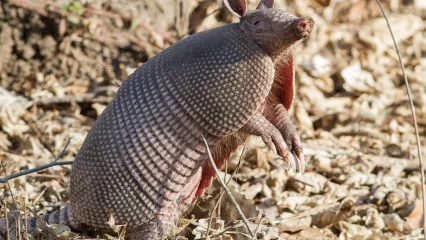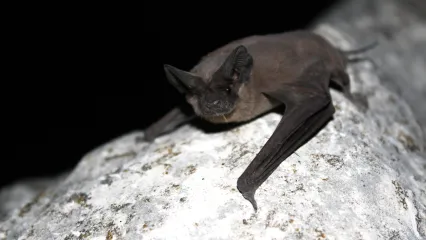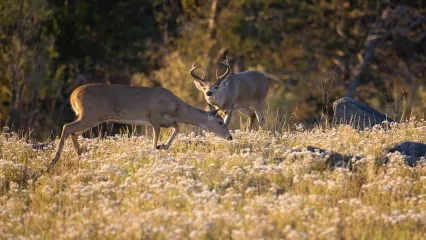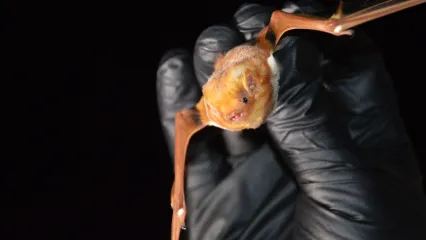
Description
Readily identified by the bony plates covering the head, back and tail, nine-banded armadillos are one of Oklahoma’s unique mammals. A broad shield covered with leathery skin protects the armadillo’s shoulders and hips while 7-10 bony “bands” are found along the mid-back and ribs. Some sources estimate these bony plates are 16 percent of the animal’s total weight. The underside lacks armor and is covered in hair. This limited amount of body hair may be the reason for the armadillo’s lower than the normal body temperature of other mammals. Most armadillo’s temperatures vary from 86-95 degrees. Burrowers, armadillos have strong legs and long claws on both fore and hind feet, leading to distinctive tracks. Four long, evenly-splayed toes are visible from the front foot, five on the hind.
Size
Individual armadillo’s size can range widely; males are typically larger than females. The average weight is 12 pounds and most armadillos are 2 ½ feet long.
Habitat
Habitat generalists, the range of armadillos is more limited by freezing temperatures than by habitat features. Because they build burrows, armadillos are often found in sandy or clay soils, which provide for easier digging. Up to 12 burrows – 3-15 feet in length – may be maintained by one individual, but four to five burrows are more common. Burrows are often 8-10 inches in diameter. Nine-banded armadillos have been expanding their range north and east since the 1800s when European colonists settled South Texas. The development of bridges and well-worn roads are thought to have helped this species claim new territory.
Life Cycle
Nine-banded armadillos are largely insect-eaters. Some studies have found animal matter, especially adult and larval beetles, comprise more than 90 percent of their diet. The remaining 10 percent is made of vegetation, including seasonally abundant fruits like persimmons. Mating occurs in June and July. A single egg is fertilized, but that egg later divides into four embryos. Gestation is delayed by approximately four months. Identical quadruplets are born the following spring.


